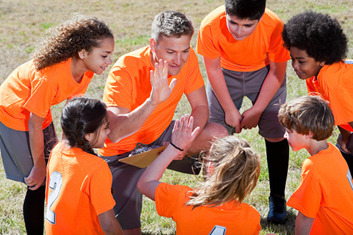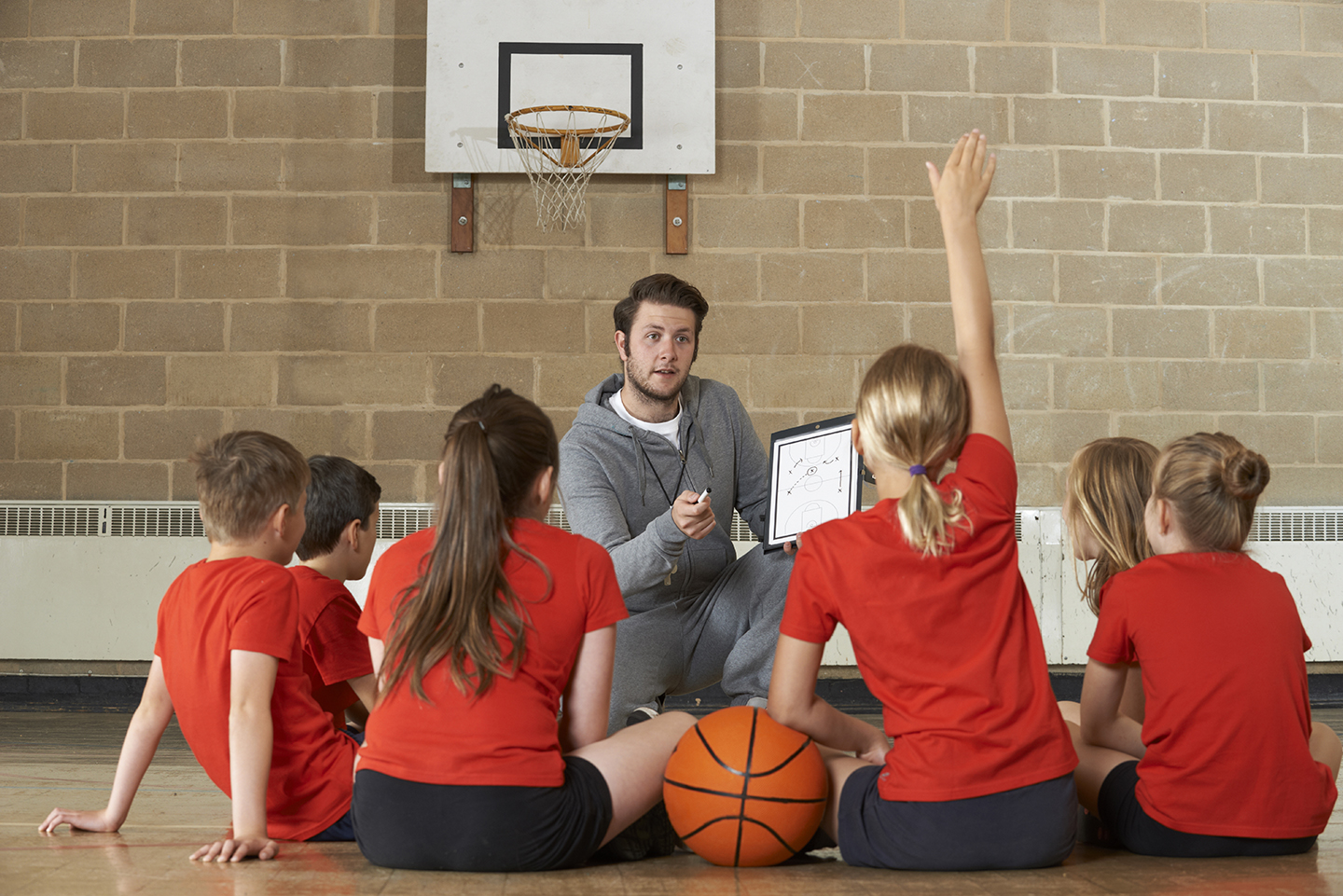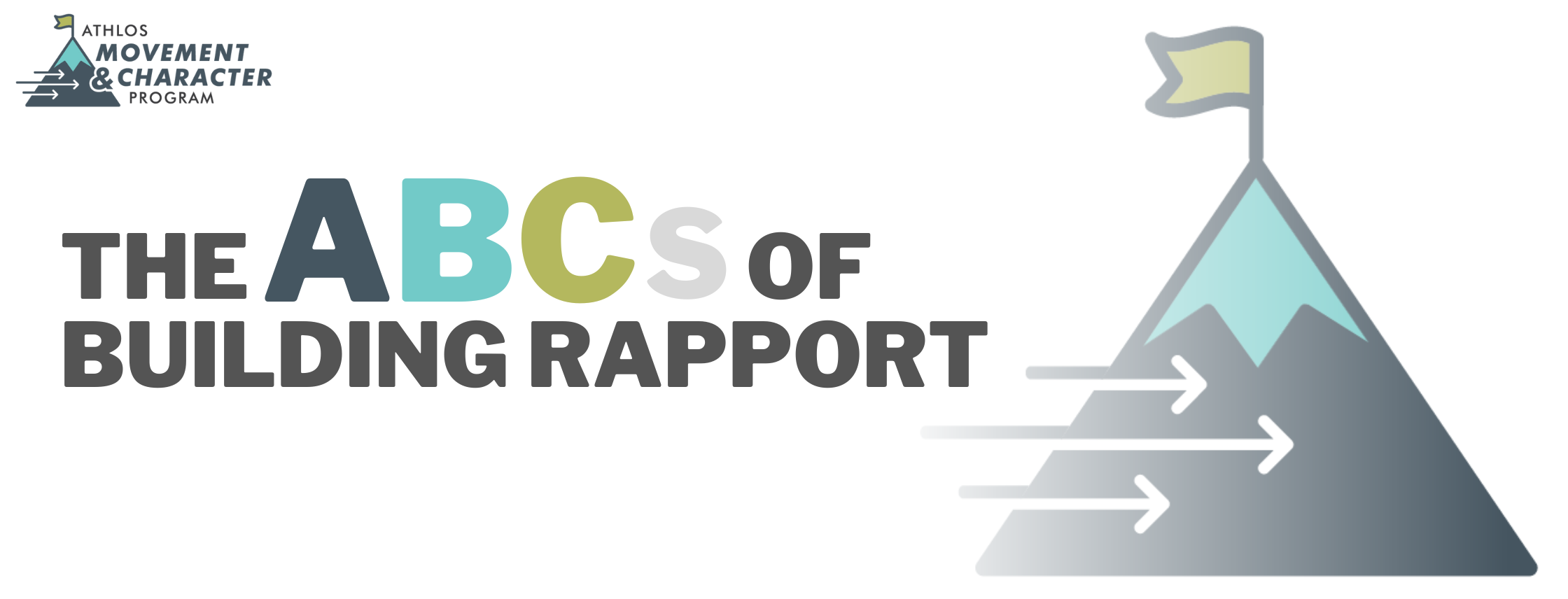A key component of managing a group of students and/or athletes (regardless of age) is the teacher’s/coach’s rapport with participants in their sessions. From day one of teacher education programs and many coach education courses, we hear about the importance of relationships. We are inundated with information, discussions, and resources for building strong relationships with the youth we serve.
Having a relationship with someone or something is simply the status of being connected to that person or thing. So, naturally, it is important for us to cultivate those connections. However, in order to maximize teaching, learning, and development, we should take it a step further and not simply develop a mere connection. Ideally, our relationships would be founded in mutual trust and respect.
This is where building a rapport comes in. Again, a relationship is simply a status or condition of being connected, whereas rapport is a relationship where all parties have a strong, mutual trust and respect for one another. When a solid rapport is established, we can expect athletes to:
- Listen more intently
- Be more engaged in activity
- Be more willing to face challenges
- Accept failure
- Feel greater connection
- Take healthy risks
- Experience higher levels of motivation
- Help build positive class culture

A solid rapport is not built on its own. It takes intentional time and effort by both (or all) members of the given relationship. There are many ways to develop rapport with people and often times the strategies being used will be unique to the student or athlete. Their age, grade, personality, etc. all play a role in the nuanced strategies we use to build mutual trust and respect. This post outlines a couple broad strategies and concepts that we use as the basis for building rapport with ANY group of students and/or athletes (for the remainder of the post we will identify this group as simply “athletes”). We call them the ABCs of Rapport.
Assume the Best

We often fail to recognize the assumptions we are making about our classes or sessions, the athletes within them, their intentions, and their feelings. We overlook how those assumptions can fracture the relationship and rapport we are trying to build. This is most often the case with behavior. There may have been times in our careers where behavior was an issue and our first assumption was, this is a bad kid, this kid doesn’t want to learn, they are just trying to make this difficult, and/or there’s nothing we can do to fix the situation. In order to build and maintain mutual trust and respect with each athlete, we must fight the urge to assume the negative and instead dig into the root causes of those behaviors by assuming the best.
When assuming the best, we don’t want to be naïve and think “oh this kid is being so nice to us by misbehaving!” In reality, assuming the best means we need to be cognizant a few things.
- Athletes come from a variety of backgrounds. Some athletes have grown up and learned in a household full of support, love, safety, trust, and care. Whereas others have never felt any of that from an adult figure in their lives. Is it their fault that haven’t had those experiences? Maybe this is how they act and behave EVERY DAY at home, and they genuinely don’t know how to act differently. With this in mind, we can more easily remember that the athlete may not be acting or behaving that way with mal intent. It then becomes part of our responsibility to help that athlete learn appropriate behaviors.
- Athletes want to learn. When learning takes place, in any context, there is a natural sense of improvement or positive development. Each and every one of us is happy or feels pleased or proud when we learn something new. The athletes we serve are no different. It is a good feeling to know that we are improving at something, whether it’s a video game, mathematics, or soccer! We must remember that regardless of words, actions, or behaviors, there is an inherent desire to learn and become even marginally “better” than we were before. Rarely, if ever, does an athlete have a true desire to NOT learn, develop, or grow.
- Athletes want structure. We have all heard that young people “need” structure. That is undoubtably true when trying to teach or practice something with them. However, it is not only that they need structure, but they actually yearn for it. The athletes we serve will likely never overtly tell us this however it is ultimately what allows them to trust and respect us. When athletes know and understand that there is a purpose for what we do in class and that that purpose is to ensure safety, trust, respect, and learning the rapport we are trying to build is solidified. When athletes push back against this structure, it isn’t because they don’t want it, it is because they are testing our commitment to providing them the safety, trust, and respect they are looking for.
Be Relatable
We know that rapport is a relationship where mutual trust and respect are present. Before we can develop that trust and respect, we must find a lane (or multiple lanes) to open and establish a relationship. In order to do that, there are going to be time where we must intentionally seek out ways we can relate to the athletes. There will be times when it is quite easy to relate with an athlete, just as there will be times where more time and effort and necessary. Below are a few items to keep in mind with regard to being relatable.
- Be willing to share. Remember that rapport is a two-way street. A sense of mutual trust and respect can only develop if both parties are willing to find and share commonalities. We can know every little thing there is to know about each of athletes we work with, but if we are a closed book and they only see us a person who tells them what to do, there is no sense of relationship. Thus, no chance of establishing any sort of rapport. We do not have to share personal information or aspects of our private life, however fantastic connections can be made through hobbies, interests, food, experiences, sports, etc.

- Cultivate connections. When we recognize a connection, we have with an athlete, build from it. Continue dialog and conversation when appropriate. Ask questions to learn more, offer insight and experiences, and use it to generate new connections either with that athlete or others.
- Know their language. Being able to communicate with athletes is an absolute necessity. Being able to communicate in a language that they understand and readily use is very powerful skill. With that said, we should not feel like we must write in text message slang or start using the word “bruh.”. It is, however, important to understand common phrases and terminology. If, for nothing else, but to offer insight into what we say to athletes and how we say it. This is also true for understanding what and why popular games, apps, social media, etc. are being used and why they are being used. Regardless of whether or now we engage in any of them. This further builds connection and opens lanes, allowing for us to be more relatable.
Create a Community

Some call it cosmopolitanism, but quite simply, treating our classes and sessions like a team or better yet, a community is a wonderful means of developing trust and respect. When we consider everyone involved members of the same team or community, we know that we are all there working toward the same thing. There is HUGE power in the word “we.” In a community, each member plays a role in trying to build and/or maintain a strong community. In a strong community, members understand that each member may be different, each may have different thoughts or opinions, but there is trust and respect present. Our classes and sessions should be the same way. Inclusive, safe, and dedicated to bettering ourselves and each other. Everyone from teacher/coach to athlete play a pivotal role in this community. Below are a few strategies for creating community.
- Use the words WE and US. When the words “I” and “you” are used too often it creates a divide between members of the community. When possible substitute the words “we” and “us.” This is how WE do things, as opposed to I want you to do it this way.
- Community is every day, not just some days. We need to be consistent with our messaging when creating and maintaining community. Whether its praise or discipline, emails home, or conversations with other teacher/coaches. If we truly want to establish trust and respect, we need to remember that it’s an everyday thing and not just a some days thing.
- Be proud of our community. There is absolutely nothing wrong with us being proud of our community. And there is nothing wrong with showing our pride. Having pride in what we do, whether its gardening, budgeting, sewing, or teaching makes us more likely to approach it with vigor and excitement. The same can be said for the community we create. Also, imagine how we feel when someone tells us they are proud of something we have done. We can use this to our advantage when our athletes hear us tell them how proud we are of their development, learning, effort, energy, and/or anything else along those lines.
Stop Taking Ourselves so Seriously
This final anecdote is something that may seem a bit harsh but when we really think about it seems more and more necessary. There are times when we (teachers and coaches in general) just can’t get out of our own way. This is often do to how we perceive our profession, our classes, our programs, and ourselves. To be fair, we have an extremely important role in society with extraordinary responsibilities. However, we must also remember:
- We teach/coach humans. We do not teach robots. Humans have good days and bad, are sometimes eager and sometimes bored, are gifted in certain areas and struggle with others, and are all-in-all imperfect. It is imperative to remind ourselves of that from time to time. Because of these imperfections, some sessions will go great, and some won’t, some sessions will be amazing and some challenging, and sometimes the faults for these instances have NOTHING to do with us. And as we’ll be reminded in the next point, once upon a time, that was us.

- We are human. We cannot forget that not only do we teach humans, but we are human! We have bad days and good days, days where we are on fire and days we couldn’t hit the broad side of a barn, there are days where we are wired for sound and others where we can hardly keep our eyes open. All of these things are too be expected and it is OK! Now if we find ourselves tired more often than not, we may need to rethink some things. We cannot forget that we, like the athletes we work with, are human and always will be. We sat in the very spots our athletes are, on good days and bad. Understanding and dealing with the ebbs and flows of life will make shared experiences between us and the athletes that much better.
- Humans are not perfect. We all make mistakes. We all say things we don’t mean. We have all reacted to situations in regrettable ways. As teachers and coaches, we know that the athletes we serve are not perfect, yet sometimes we forget to remind ourselves that we are not perfect either. Acknowledging this to ourselves is crucial. However, what may be even more impactful is acknowledging our imperfections to the athletes. Acknowledging our own faults is the quickest way to build trust and respect. It is important for all to understand that mistakes, failures, losses, etc. are not only part of life, but they are the part of life that is the greatest teacher. Each of these aspects of life is an opportunity to learn and grow. When we recognize this in athletes and ourselves, we must remind the community we built that we can’t shy away from them but recognize them, embrace them together, and move forward.

